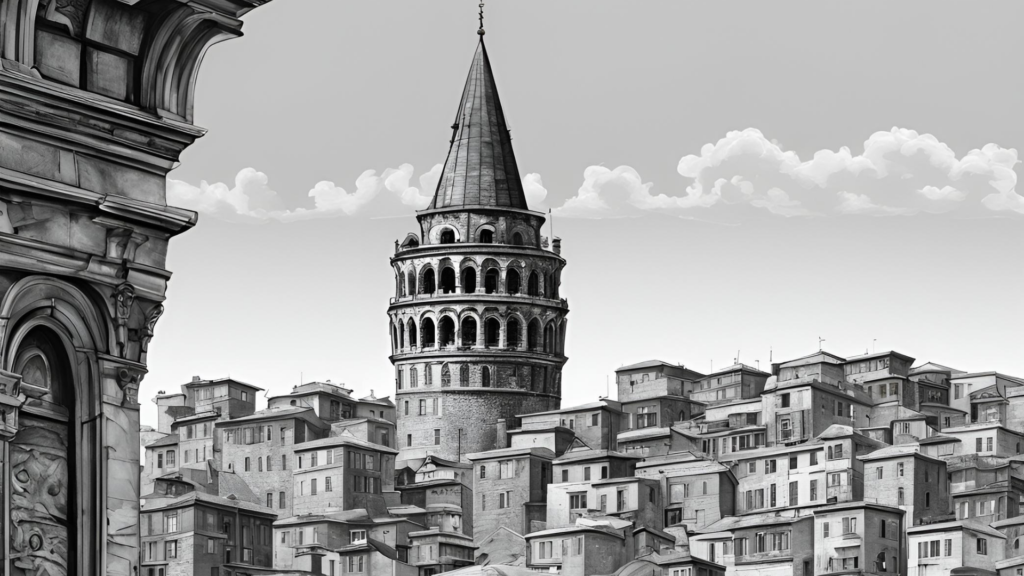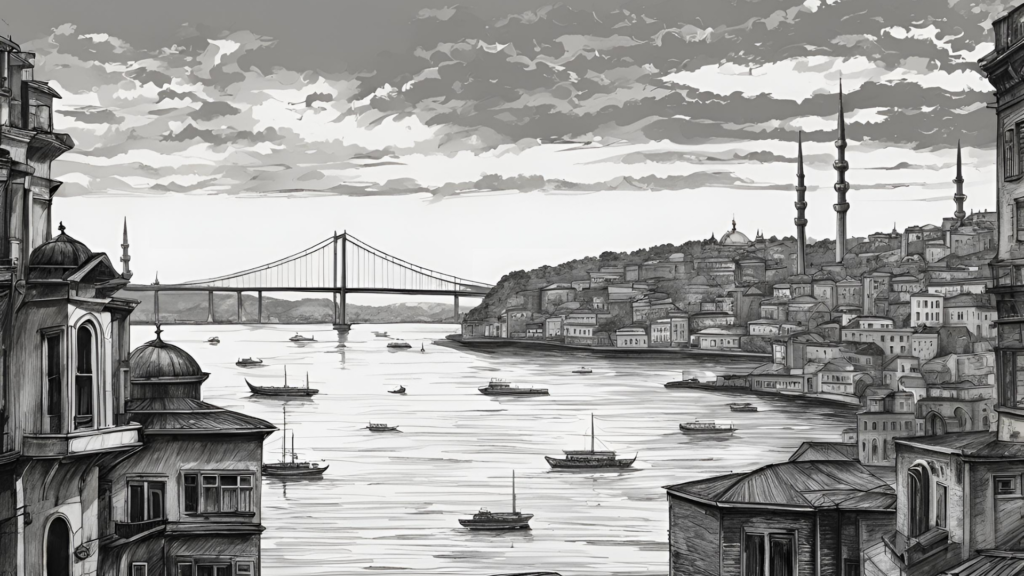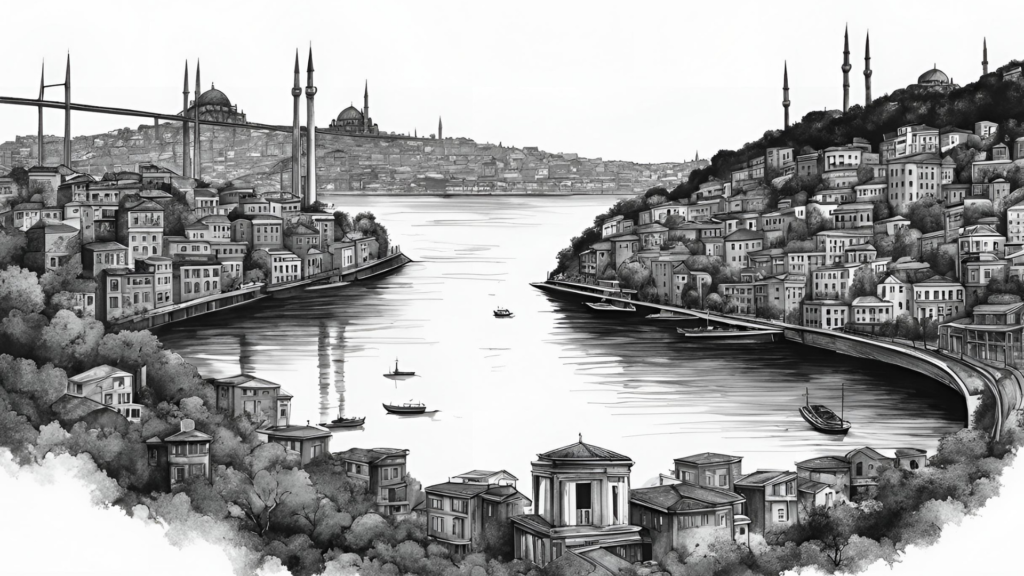Istanbul, once known as Constantinople, stands as a testament to thousands of years of history, culture, and architectural marvels. As the only city in the world spanning two continents—Europe and Asia—this vibrant metropolis has been a cultural crossroads, offering visitors an unparalleled blend of East and West. Whether you’re wandering its ancient streets or exploring its modern neighborhoods, Istanbul never ceases to amaze. In this article, we’ll delve into the rich history of the city, its changing identity, its geographical significance, and a guide to its weather through the seasons.

A Brief History of Istanbul
Istanbul’s history is a tale of empires. It was first founded by the Greeks as Byzantium in 660 BC. After being rebuilt and expanded by the Roman emperor Constantine the Great in AD 330, it was renamed Constantinople, becoming the capital of the Byzantine Empire. For more than a millennium, Constantinople was the political and cultural hub of the Christian world, famed for its grand churches such as the Hagia Sophia, a monument that still stands today as a key attraction in Istanbul.
In 1453, the city fell to Sultan Mehmed II, marking the rise of the Ottoman Empire. Constantinople became the seat of Ottoman power, and its transformation into a Muslim city began, with the Hagia Sophia becoming a mosque. This era also saw the construction of key landmarks like Topkapı Palace and the Blue Mosque.
After the fall of the Ottoman Empire in 1923, the city was officially renamed Istanbul, and while the capital moved to Ankara, Istanbul remained the beating heart of Turkey’s economic and cultural life.
Where is Istanbul?
Istanbul’s unique geography is one of its most defining features. The city is divided by the Bosphorus Strait, with one foot in Europe and the other in Asia. This strait connects the Black Sea to the Sea of Marmara, playing a crucial role in both the city’s defense and its development as a major trading hub. Visitors can cross between continents within minutes, experiencing the rich diversity of culture, architecture, and cuisine that comes with this geographic split.
Istanbul is located in the northwestern part of Turkey, bordered by the Marmara Sea to the south and the Black Sea to the north. The Golden Horn, a natural harbor, divides the European side into the historic Old City (Sultanahmet) and the modern districts like Beyoğlu.

Istanbul’s Weather: Season by Season
Istanbul’s weather varies significantly from season to season, offering something unique for visitors year-round.
Spring (March to May):
Spring is one of the best times to visit Istanbul, with mild temperatures ranging from 12°C to 20°C (54°F to 68°F). The city comes alive with Tulip Festivals, and its parks are filled with blooming flowers. This is an excellent time for sightseeing at popular attractions like the Topkapı Palace and the Basilica Cistern, as the weather is pleasant and crowds are manageable.
Summer (June to August):
Summers in Istanbul are hot and humid, with temperatures ranging from 25°C to 30°C (77°F to 86°F). While the city can be crowded with tourists, it’s also the best time to enjoy a Bosphorus cruise or explore the nearby Princes’ Islands. The city’s vibrant nightlife and rooftop terraces are perfect for soaking up the summer atmosphere.
Autumn (September to November):
Autumn is another ideal time to visit Istanbul, with cooler temperatures ranging from 15°C to 25°C (59°F to 77°F). The city’s tree-lined streets and parks are filled with the golden hues of fall, making it a picturesque time to visit landmarks like the Hagia Sophia or take a walk through the historic Sultanahmet district. The weather is still pleasant for outdoor activities, and the tourist crowds begin to thin out.
Winter (December to February):
Winters in Istanbul can be chilly, with temperatures ranging from 3°C to 10°C (37°F to 50°F), and occasional snow. Despite the cold, Istanbul has a magical feel during the winter months. Iconic attractions like the Grand Bazaar and Spice Market offer cozy escapes, while sites like the Basilica Cistern and Topkapı Palace take on a serene, quiet atmosphere. Winter is also an ideal time to explore Istanbul’s museums and indoor attractions.

Explore Istanbul with Our Exclusive Tours
Now that you know a bit about Istanbul’s history, location, and weather, it’s time to experience it firsthand! Whether you’re here for a short stay or a longer adventure, we offer a range of curated tours that allow you to discover the best of Istanbul:
• Hagia Sophia: In the Footsteps of Stories – Walk through centuries of history with a guided tour of this architectural masterpiece.
• Basilica Cistern: Discovering Medusa – Uncover the mysteries of the ancient underground water system, including the famous Medusa heads.
• Topkapı Palace: Scenes of the Ottoman Empire – Step into the world of Ottoman sultans and discover the treasures of this magnificent palace.
• Majestic Trio: Hagia Sophia, Basilica Cistern & Topkapı Palace – Combine Istanbul’s most iconic sites into one unforgettable tour.
Let us make your visit to Istanbul an experience of a lifetime. Book your tour today and explore the timeless beauty of this extraordinary city.
